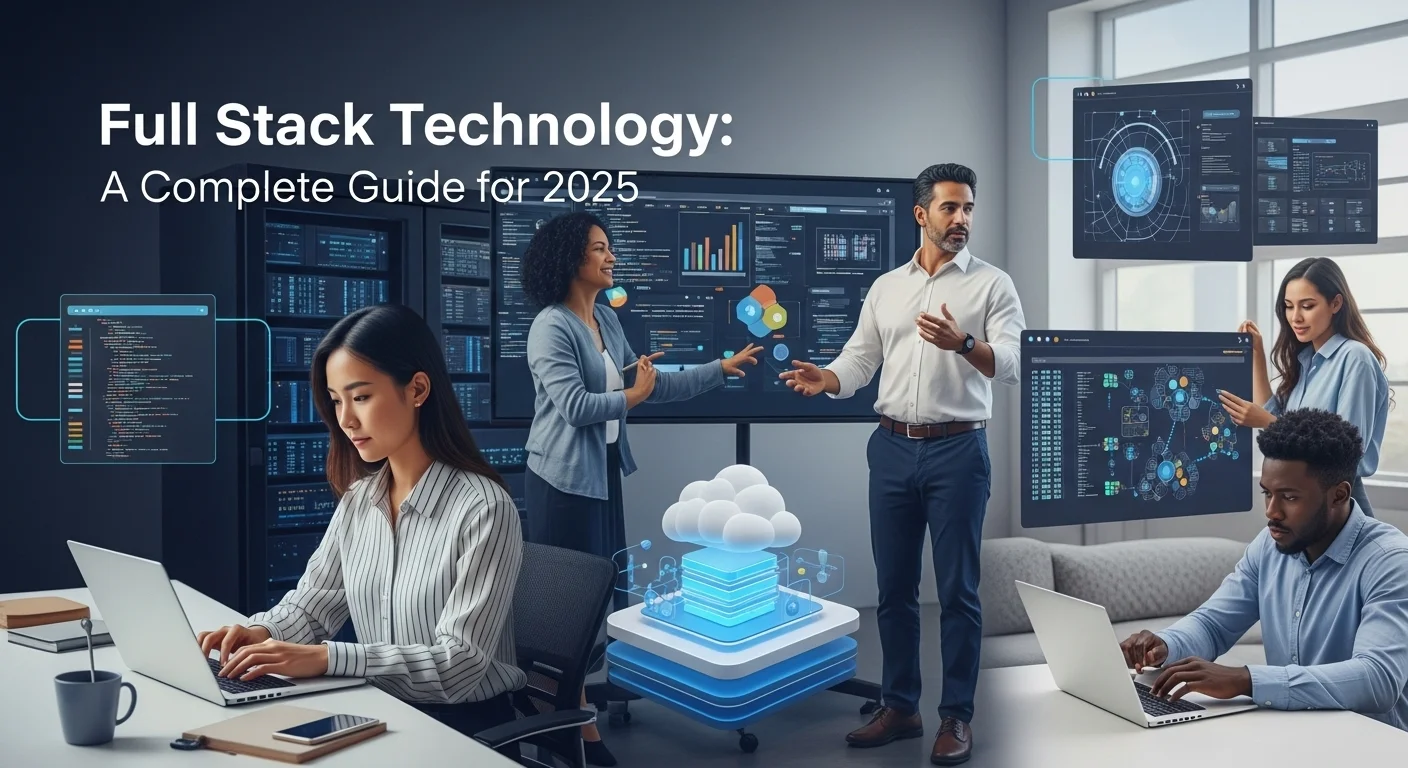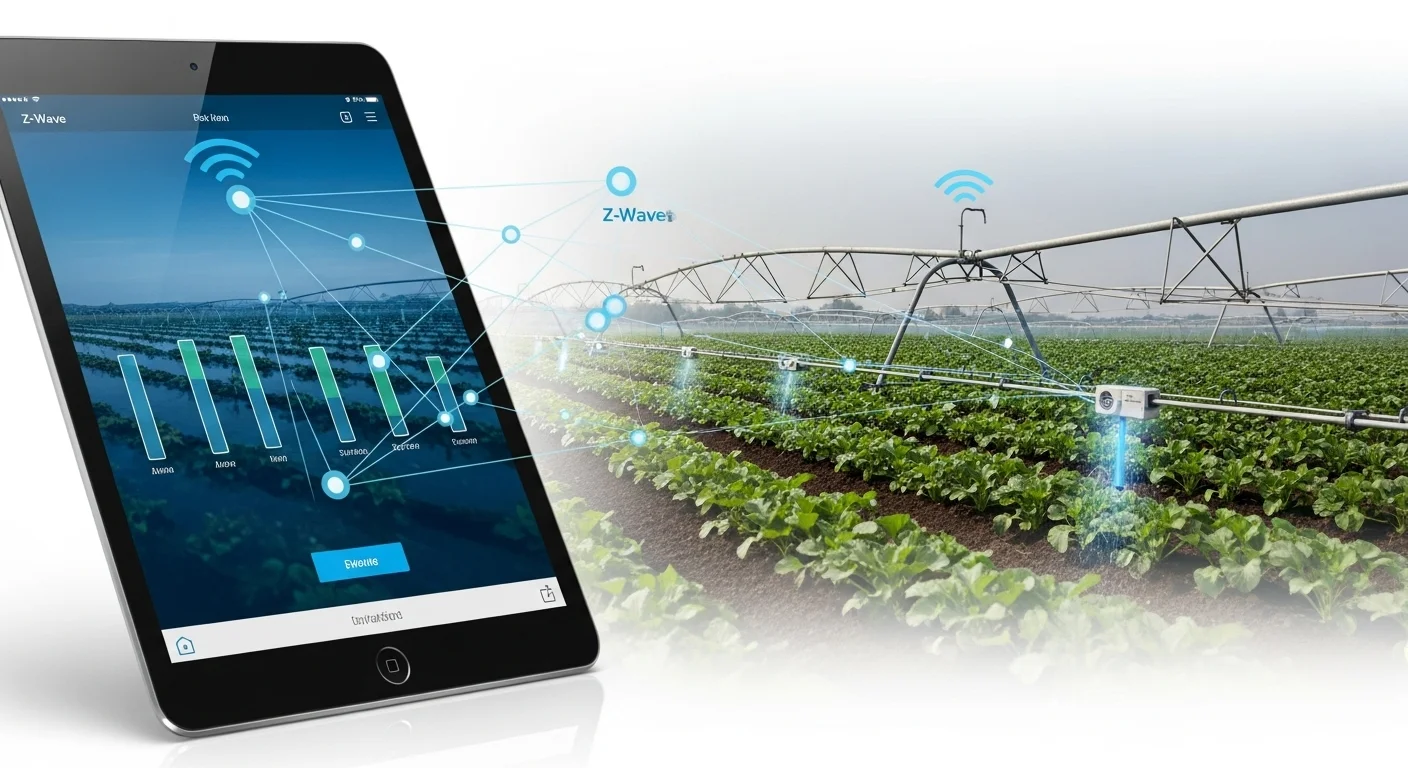Forget 'Go Big or Go Home': Why Starting Small is Your Secret Weapon in Tech
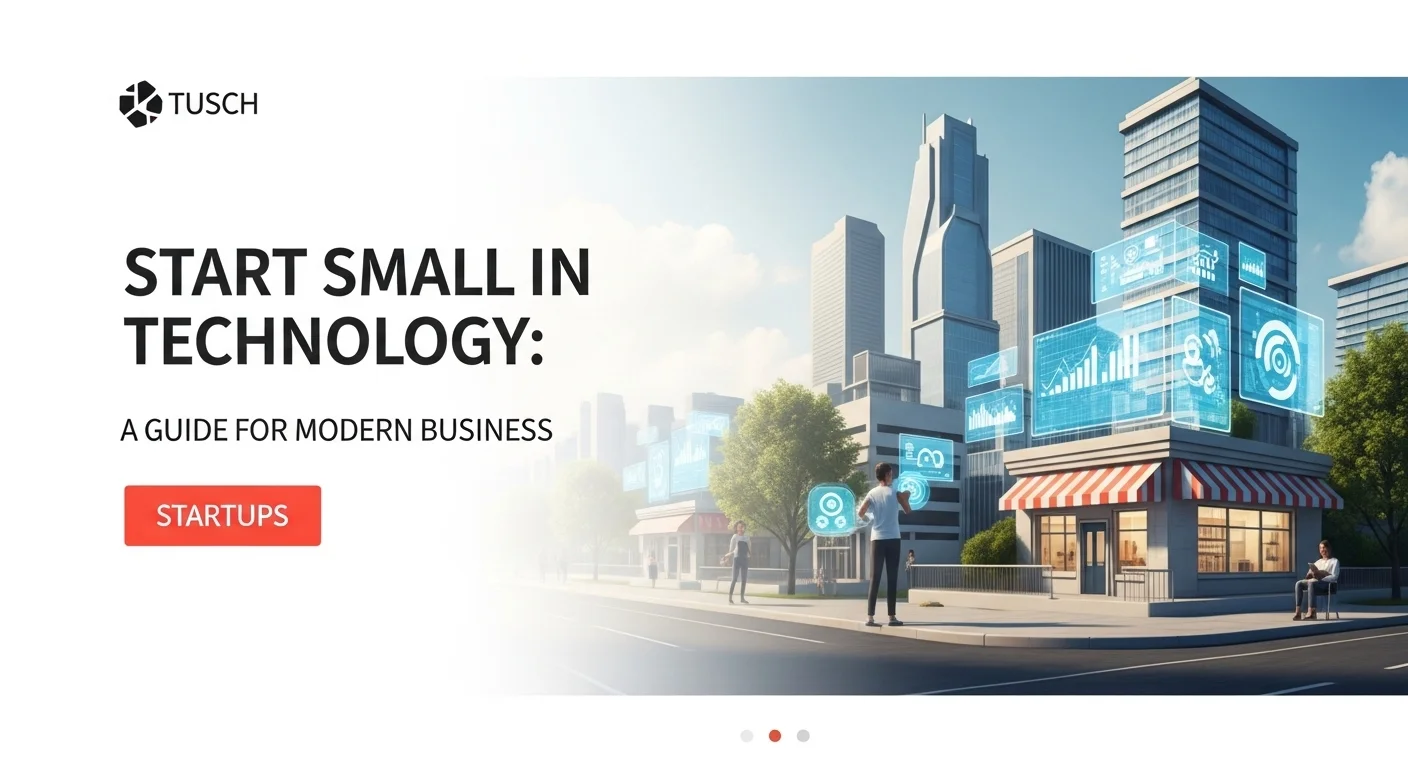
Executive Summary
In my years as a tech advisor, I've seen countless brilliant entrepreneurs get paralyzed by one thing: the sheer scale of their own ambition. They think they need a massive, all-in-one, perfect system from day one. That's a recipe for disaster. The 'Start Small' principle is the antidote. It's not about thinking small; it's about starting smart. This approach is all about launching focused, manageable projects to test your ideas in the real world, gather feedback, and prove your concept before you bet the farm. For a startup, this means building a Minimum Viable Product (MVP). For an established business, it’s about running a pilot program for that new AI tool you've been eyeing. The benefits I've seen firsthand are huge: you slash your financial risk, learn incredibly fast, and stay flexible enough to pivot when the market throws you a curveball. This article is my roadmap for you, showing how to apply this powerful mindset to build a solid foundation for real, sustainable growth.
Table of Contents
Table of Contents
- What Does 'Start Small' Really Mean in Tech?
- Why Starting Small is a Modern Business Necessity
- The Real-World Benefits of Starting Small
- Your Complete Guide to Starting Small in Tech
- Core Technical Methods: MVP, Agile, and the Cloud
- Smart Business Moves for a Lean Launch
- Resources and Why Starting Small Beats Going Big
- Pro Tips to Master Your 'Start Small' Journey
- Best Practices for Smart, Iterative Growth
- The Essential Toolbox for Starting Small
- Hot Business Ideas for 2025 Using This Method
What Does 'Start Small' Really Mean in Tech?
Let's cut through the jargon. The 'Start Small' principle is fundamentally a strategy about being smart and realistic. It’s about prioritizing learning and reducing risk. In the tech world, where shiny new tools and massive projects can be incredibly tempting, this approach is your anchor. It’s the direct opposite of the 'big bang' launch, where companies pour millions into a feature-packed product hoping it's what people want. I've seen that movie before, and it rarely has a happy ending. Instead, this philosophy, heavily inspired by the Lean Startup world, is all about a simple loop: Build, Measure, Learn. You start with a Minimum Viable Product (MVP)—the simplest possible version of your idea that solves a real problem for a specific group of people. This isn't your grand vision; it's just the first, crucial step. The importance of this can't be overstated. Tech projects are magnets for complexity. Starting small breaks that complexity into bite-sized, manageable pieces. It lowers the financial barrier to entry, which is a massive win. It means you don't need a huge pot of venture capital to get your idea for a small business off the ground. It creates a space for experimentation, where a 'failure' isn't a catastrophe; it's just a lesson learned on the path to getting it right.
Why Starting Small is a Modern Business Necessity
From a tech perspective, starting small fits like a glove with modern development methods like Agile and DevOps. These are all about working in short, focused cycles (or 'sprints') and delivering value continuously. An MVP is the perfect fuel for an Agile team. It gets a real product into users' hands quickly, so you can stop guessing and start knowing what works. This iterative cycle ensures that what you end up building is not just technically solid, but something the market actually needs. The business case is just as strong. Imagine your company wants to dip its toes into Artificial Intelligence. Instead of a terrifyingly complex project to inject AI everywhere, a 'start small' approach would be to launch a simple pilot. Maybe it’s an AI chatbot to handle one specific customer query, or a tool to analyze sales data for just one product. This small-scale test does so much: it proves the technology's value to the higher-ups, helps your team learn the ropes in a low-stakes environment, and gives you a clear ROI to justify doing more. This is exactly how a small business should start with powerful technology. You don't try to climb the whole mountain in one go. You establish a solid base camp first. For anyone wondering what small business to start in 2025, using this approach with new tech is a huge competitive edge. A new e-commerce shop could begin with a simple store and one AI-powered feature, like product recommendations, rather than a bloated platform with dozens of features nobody asked for.
The Real-World Benefits of Starting Small
When I advise businesses to adopt this mindset, the advantages become clear almost immediately. It’s not just theory; it’s a practical path to better outcomes.
- Reduced Financial Risk: This one's the most obvious. Launching an MVP or a pilot project costs a fraction of a full-blown launch. If the idea doesn't stick, you haven't bet the company on it. You've preserved your capital to pivot and try something new.
- Faster Time-to-Market: A simple product is a fast product. Getting into the market quickly lets you grab an early audience and start building your brand while competitors are still stuck in development meetings. The classic story of Dropbox starting with just a simple explainer video to prove demand is a perfect example.
- Real Learning from Real Customers: Starting small forces you out of your own echo chamber. You have to talk to your customers and listen to what they need. This feedback is gold. It ensures you're building features that people will actually use and pay for.
- Flexibility and Agility: The market is always changing. A business that poured all its resources into one giant, rigid system will struggle to adapt. But a company that builds in small, iterative steps can easily change direction based on new data without having to scrap everything. This agility is what defines successful modern companies.
- Happier, More Focused Teams: From a human perspective, working on small, achievable goals is incredibly motivating. Shipping a product, even a simple one, creates momentum and a sense of accomplishment. It also keeps the team focused on a clear target, avoiding the 'scope creep' that kills big projects.
Ultimately, starting small is about being strategic. It’s recognizing that the road to building something great is a series of smart, deliberate steps, not one giant leap of faith. For any entrepreneur or business leader today, mastering this philosophy is key. I believe the best small businesses to start in 2025 will be the ones that master this art of lean innovation, whether in AI, software, or cybersecurity. The real question isn't if you have the resources to build your dream today, but if you have the wisdom to start small and build it right.
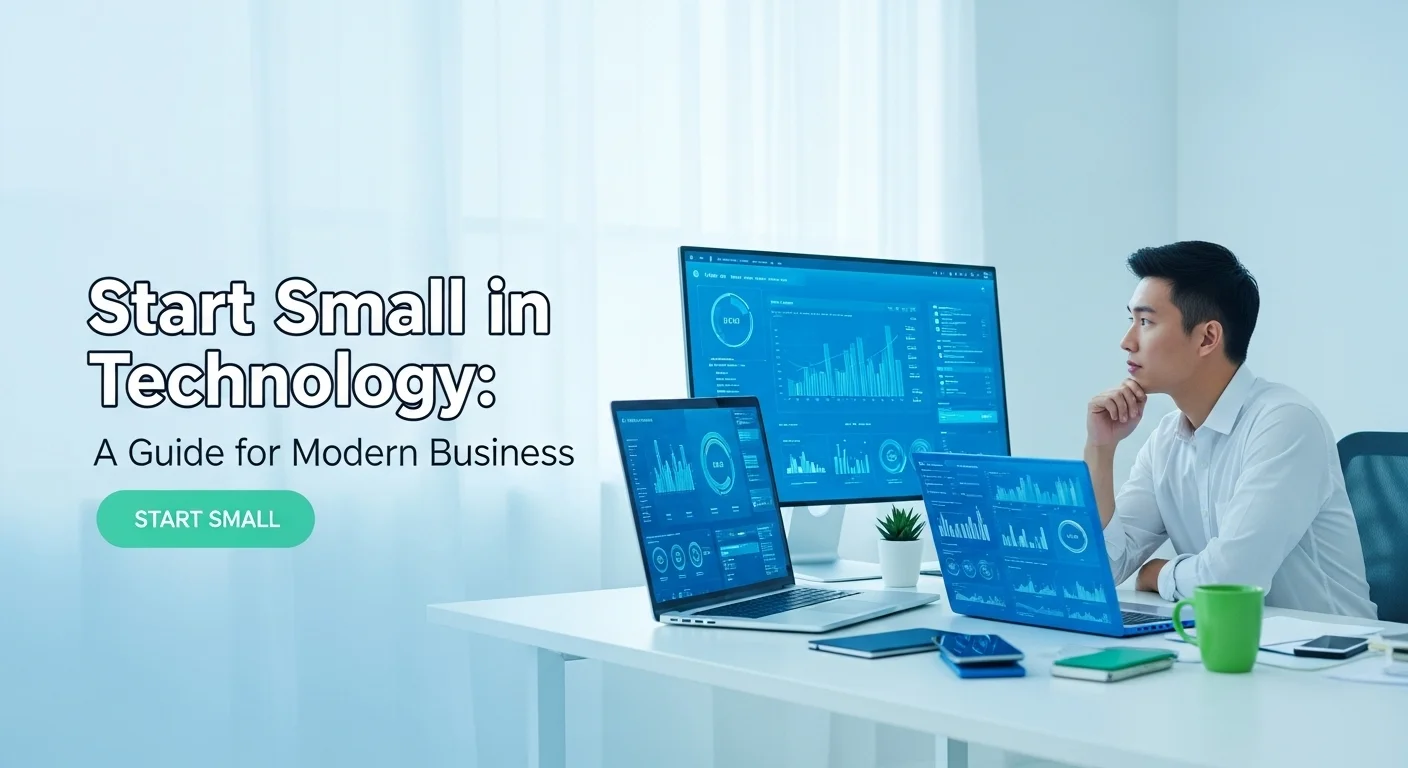
Your Complete Guide to Starting Small in Technology and Business Solutions
Starting a new tech venture, or even just bringing new technology into your business, can feel like staring up at a skyscraper. The 'Start Small' philosophy is your elevator to the top floor, one manageable level at a time. This guide is my playbook, filled with the practical methods and tools I've used to help businesses succeed. We'll walk through the exact steps to turn those promising ideas for a small business into real, thriving companies.
Core Technical Methods: MVP, Agile, and the Cloud
The technical heart of the 'Start Small' approach is built on tools and methods designed for flexibility and growth. Getting these right is non-negotiable.
- The Minimum Viable Product (MVP): I can't stress this enough: your MVP is not a sloppy, half-baked product. It is the most focused, streamlined version of your product that solves one core problem for one specific group of users. Defining it is an exercise in ruthless prioritization. You have to ask: What's the #1 problem I'm solving? What's the absolute minimum I need to build to solve it? Many of the best small businesses to start are built on a single, perfectly executed feature that solves a niche problem. For instance, a new project management app might launch with just a to-do list and a comment feature, saving complex charts and reports for later, once users ask for them.
- Agile and Scrum Frameworks: Think of Agile as a mindset of flexibility, and Scrum as the playbook to put it into action. Work is organized into short 'sprints' (usually 2-4 weeks), and at the end of each one, your team delivers a working piece of the product. This rhythm is the engine of the 'Start Small' model. Your MVP is the goal of the first few sprints. After that, each sprint adds new features or improvements based directly on user feedback. It creates a powerful cycle of continuous development and learning.
- Leveraging Cloud Computing: Cloud platforms like Amazon Web Services (AWS), Google Cloud, and Microsoft Azure are absolute game-changers for anyone starting small. Years ago, you'd need a huge upfront investment in servers and hardware. Today, the cloud gives you access to world-class infrastructure on a pay-as-you-go basis. I've seen startups launch on a single virtual server for less than the cost of a few pizzas a month, then scale up with a few clicks as they grow. Plus, many of these platforms have fantastic free tiers and startup programs that give you credits and support. This makes it incredibly easy for a small business to get started without needing deep pockets. You can deploy your app and database in the cloud, paying only for what you use and avoiding a mountain of upfront costs.
Smart Business Moves for a Lean Launch
Great tech needs a smart business strategy to match. These are my go-to techniques for a lean start.
- The Lean Canvas: Forget the 60-page business plan nobody will read. The Lean Canvas is a one-page business model that forces you to be brutally honest about your idea. It makes you define the Problem, Solution, Key Metrics, and Unique Value Proposition on a single sheet. It's the fastest way to identify the riskiest parts of your plan so you can test them first with your MVP.
- Bootstrapping: This is the fine art of funding your business with your own savings and, most importantly, revenue from your first customers. It's the ultimate 'start small' financial strategy. Bootstrapping forces you to be disciplined and obsessed with creating something people will pay for right away. I have immense respect for bootstrapped founders; they grow sustainably and maintain complete control of their vision, just like the team at Mailchimp did for years.
- Customer Development: This is my favorite part. It's simple: get out of your office and talk to potential customers before you build anything. I mean it. Your assumptions about their problems are probably wrong. You need to validate everything. Do they actually have this problem? Would they use your solution? Crucially, would they pay for it? This feedback is the foundation of a successful product and a vital first step for anyone exploring small businesses to start in 2025.
Resources and Why Starting Small Beats Going Big
Today's entrepreneurs have an incredible arsenal of resources to help them start small and smart.
- Low-Code/No-Code Platforms: Tools like Bubble, Webflow, and Adalo are revolutionary. They allow people with no coding skills to build and launch fully functional web and mobile apps. They're perfect for creating an MVP to test your idea quickly and cheaply.
- Open-Source Software: Why reinvent the wheel? Leveraging open-source code can save you thousands of hours of development time. From operating systems like Linux to web frameworks like Ruby on Rails, the building blocks for your product are often available for free.
- Startup Incubators and Accelerators: Programs like Y Combinator and Techstars are boot camps for the 'start small' method. They provide some funding and intense mentorship, all focused on helping you build an MVP, talk to users, and find a real market for your product.
Comparison: Start Small (Agile) vs. Big Bang (Traditional)
When you see it side-by-side, the choice becomes obvious, especially for a new venture.
| Feature | Start Small (Lean/Agile) | Big Bang (Traditional) | |---|---|---| | **Initial Investment** | Low, manageable | High, scary | | **Risk Profile** | Low, spread out over time | High, all-or-nothing bet | | **Time to First Results** | Fast | Slow, sometimes years | | **Customer Feedback** | Early and constant | Late, after it's too late | | **Flexibility** | High, can pivot easily | Low, stuck on one path | | **Development Process** | Iterative, like building with LEGOs | Linear, like a house of cards |For any tech-driven business today, starting small isn't just one option; it's the most logical and effective path forward. Whether you're hunting for a small business idea for 2025 or trying to drive innovation in a big company, the principles are the same: start with an MVP, listen to your users, and build from there. That's how you win.
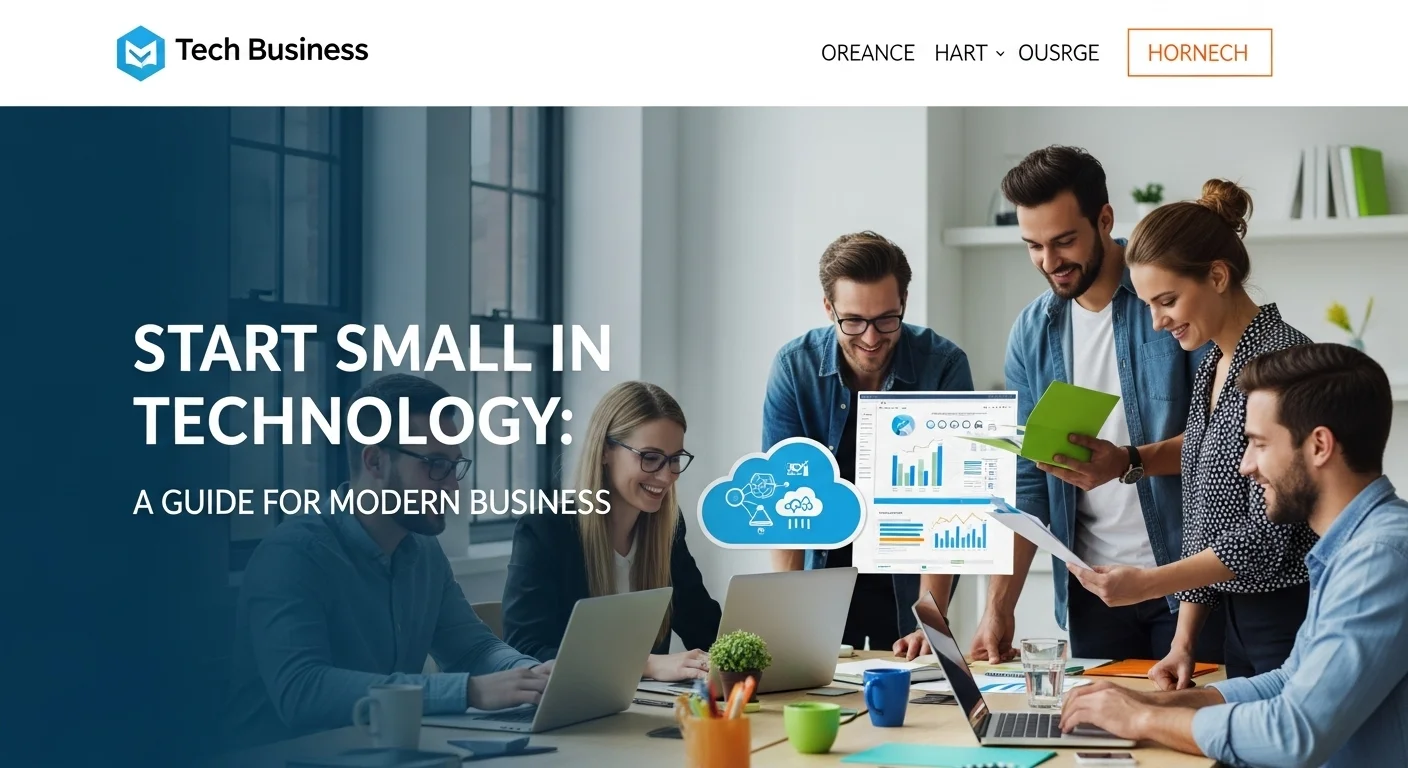
Pro Tips to Master Your 'Start Small' Journey
Adopting the 'Start Small' philosophy is more than just changing a process—it's about shifting your entire mindset. Over the years, I've seen what separates the teams that succeed with this model from those that struggle. It comes down to a few key strategies and tools. This section is my collection of actionable advice to help you master the art of starting small, especially if you're exploring ideas to start a small business in today's digital world.
Best Practices for Smart, Iterative Growth
To truly embrace starting small, you have to commit to a cycle of constant improvement. Here are the practices I drill into every team I work with.
- Obsess Over a Niche: Please, do not try to be everything to everyone. The most successful MVPs I've ever seen targeted a very specific, well-defined niche. When you focus on a small group, you can understand their problems deeply and build a solution they absolutely love. A winning small business to start often comes from serving a niche that others have ignored. For example, instead of another generic CRM, build one specifically for freelance wedding planners. Win their loyalty, and they'll be the foundation for your growth.
- Be Ruthless with Prioritization: Once you start building, you'll be drowning in good ideas. You need a system to decide what to build now, what comes next, and what's just a distraction. I'm a big fan of simple frameworks like RICE (Reach, Impact, Confidence, Effort) to objectively score features. It forces you to focus on what delivers the most bang for your buck.
- Create Tight Feedback Loops: The 'Build-Measure-Learn' cycle is only as good as its feedback loop. You need to make it incredibly easy to hear from your users. This means in-app surveys, follow-up emails, analytics tracking, and actual phone calls. The faster you can get feedback on a new feature, the faster you can learn and improve. If you are figuring out how to start a small business, make customer feedback your guiding star.
- Measure What Actually Matters: Don't get fooled by 'vanity metrics' like total downloads or page views. They feel good but tell you nothing. Focus on actionable metrics that show people are getting value. Things like daily active users, customer retention rates, or how many users complete a key action in your app. These are the numbers that tell you if your product is truly 'sticky.'
- Celebrate Learning, Not Just Wins: Here's a hard truth: not every feature you build will be a hit. Some ideas will fail. Your team's culture must treat failure as a valuable lesson, not a mistake. When a feature flops, run an analysis to figure out why. I've found that the insights from a failed experiment are often more valuable than those from a success you can't explain.
The Essential Toolbox for Starting Small
Having the right tools can make all the difference. Here’s a lean and mean tech stack I recommend for startups and small businesses:
- Project Management & Collaboration: For running Agile sprints, you can't go wrong with tools like Trello, Asana, or Jira. They make tracking your work visual and simple. For team chat, my go-to is Slack. It keeps all your conversations and integrations in one place.
- Customer Feedback & Analytics: You need data to make good decisions. Google Analytics is a must-have for website traffic. For diving deeper into how people use your actual product, tools like Mixpanel or Amplitude are fantastic. To get direct feedback, Typeform is great for beautiful surveys, and Hotjar is amazing for seeing exactly how users are interacting with your site through heatmaps.
- CRM & Marketing: Once you have users, you need to manage those relationships. The HubSpot for Startups program offers its powerful CRM and marketing tools for free or at a steep discount. For email, Mailchimp is a classic for a reason—it's perfect for building your first newsletter and keeping your early users engaged.
- Cloud & DevOps: As I mentioned, AWS, Google Cloud, and Azure are the big three for scalable infrastructure. To automate your deployment process, I highly recommend looking into Docker for containerizing your app and GitHub Actions for continuous integration. This lets you ship updates faster and with fewer headaches.
Hot Business Ideas for 2025 Using This Method
The 'Start Small' principle is timeless, but the opportunities are always evolving. Looking ahead to 2025, here are a few tech-focused ideas that are perfect for this approach:
- Hyper-Niche AI Services: Don't try to build the next ChatGPT. Focus on a specific problem. For example, an AI tool that writes marketing copy just for dentists, an AI that helps gig workers optimize their taxes, or an AI that plans logistics for local food delivery services. Start with one task and do it better than anyone else.
- Cybersecurity for the Little Guys: Most small businesses are wide open to cyber threats but can't afford big security firms. A fantastic small business to start in 2025 would be a subscription-based security service. Start with an essential package: managed firewalls, employee security training, and vulnerability scans. You can add more advanced services as you grow.
- Sustainable Tech Solutions: Consumers are demanding more eco-friendly tech. Think about an app that helps families track and lower their carbon footprint, a marketplace for refurbished electronics, or smart home devices that slash energy consumption. Start with one simple solution and build from there.
If you want to go deeper on applying these lean principles, an article I often recommend is Toptal's guide, "Building an Innovative Tech Startup From Scratch Using Lean Methodology." It's a great practical resource that really complements the strategies we've discussed. By combining these tips, tools, and forward-looking ideas, you can use the 'Start Small' approach to build a resilient, customer-loved, and truly successful tech business.
Expert Reviews & Testimonials
Sarah Johnson, Business Owner ⭐⭐⭐
A solid starting point on the 'Start Small' concept. As a business owner, I was hoping for more detailed case studies or a step-by-step example of a company that applied this successfully.
Mike Chen, IT Consultant ⭐⭐⭐⭐
This was a really helpful guide that breaks down the 'Start Small' idea well. A few of the tech concepts were still a bit dense for me, but overall, it clarified a lot.
Emma Davis, Tech Expert ⭐⭐⭐⭐⭐
Fantastic article! As someone deep in the tech world, I found this to be a comprehensive and perfectly explained overview of the Start Small methodology. It's a must-read.

